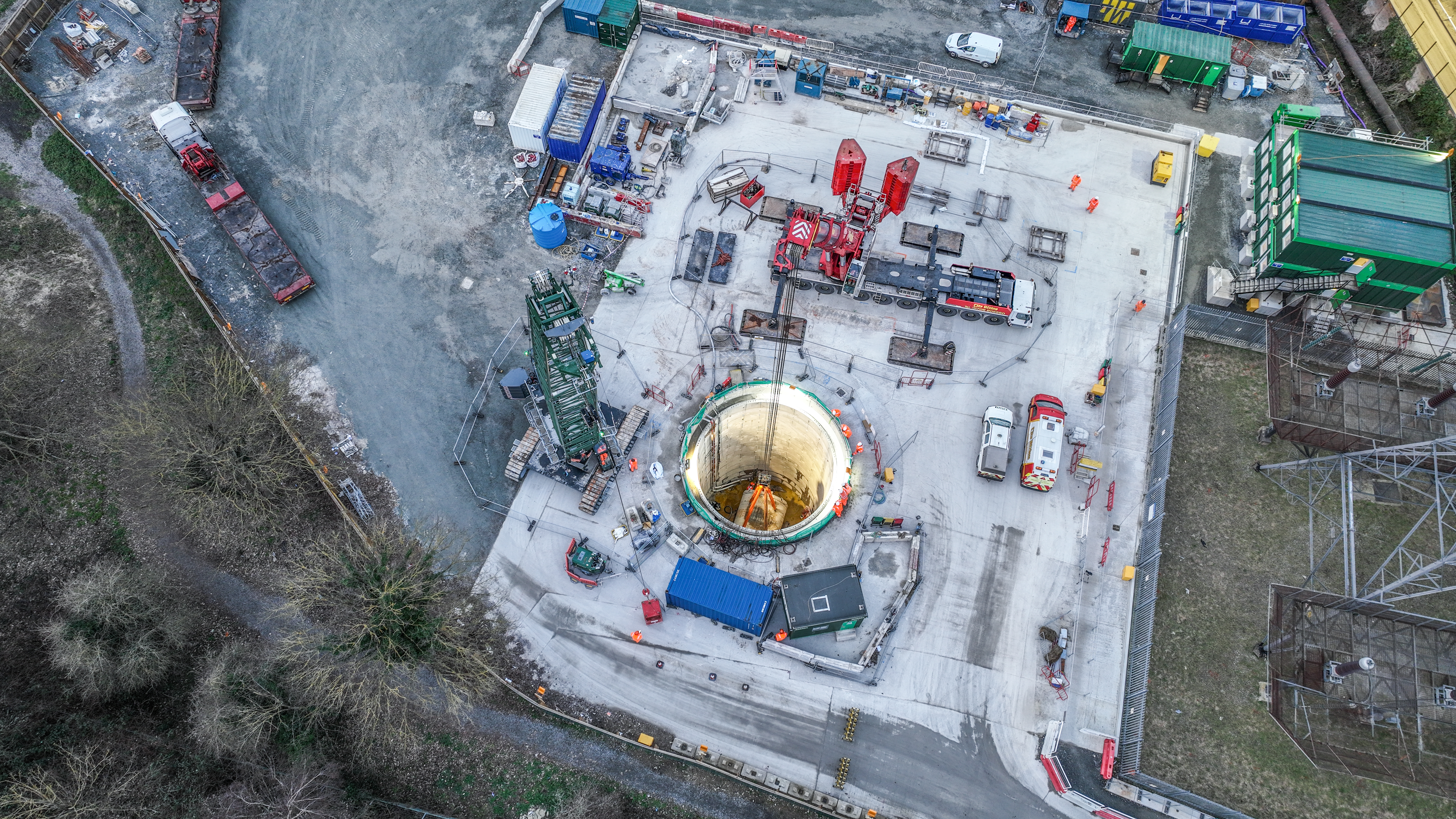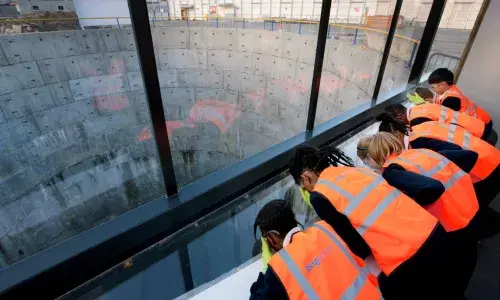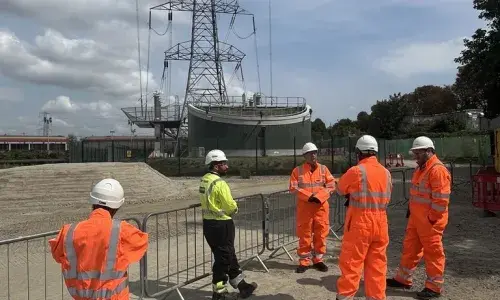
LPT Update on works at Crayford
20 February 2023
London Power Tunnels completes first underwater breakthrough at Crayford
Last week, the London Power Tunnels team celebrated an important milestone, as our Tunnel Boring Machine (TBM), Christine, left the Crayford site. This marks the end of a journey lasting more than four months. Travelling 2.5km from the Hurst site, the team navigated difficult terrain conditions caused by the chalk aquifer across the route.
As the route to Crayford passed through this aquifer, there was the risk of high pressure water leakage flowing into the shaft. Through pre-emptively flooding the shaft, we were able to balance the water pressure, creating the conditions to allow sealing gel to cure before draining down. Christine was also refurbished and modified specially to operate within these conditions. She was removed via crane following the breakthrough.
The breakthrough took place in three stages which allowed the team to dismantle the TBM in three parts. At 140 tonnes, lifting the TBM was a monumental effort, taking 8 days in total to complete!
This milestone marks the third completed drive of the project (and Christine’s second), with two remaining before all tunnelling works are complete. The remaining breakthroughs are scheduled to take place later this year. With the tunnel drive from Crayford to Hurst now complete, 26.8 km of tunnelling has been completed with 5.5 km remaining until the tunnels are fully constructed.
Malcolm Casewell, Project Manager, London Power Tunnels said:
‘The breakthrough at Crayford is unlike any other we’ve experienced on this project. Ensuring Christine was fit for an underwater breakthrough was a great challenge and I’m proud of what we’ve achieved today alongside our engineering partners, HMJV and Herrenknecht.’
LPT is a £1bn project to rewire and future-proof London for increasing demand through the construction of underground tunnels to house electrical cables which can be easily replaced and supplemented as the capital grows. LPT will also help provide crucial infrastructure for helping the UK energy sector to reach net-zero targets.
LPT is due to complete in 2027 and will leave a positive legacy in the areas of London impacted by its work, through the delivery of community volunteering activities and a STEM and careers engagement programme for more than 100,000 young people.
Housing the new electricity cables up to 60 metres underground has a number of benefits. Overall disruption to Londoners and road users during construction will be minimal as most construction takes place deep beneath the ground and future repair and maintenance can be carried out with minimal disruption to traffic, businesses, and residents. For more information about the LPT project, please visit National Grid's project website.
The project forms part of National Grid’s wider investment in the electricity system in England and Wales, including; major projects to connect increasing amounts of offshore wind generation along the East Coast, and the Hinkley Connection project, a £900 million investment to connect low carbon energy to six million homes in the South West.


